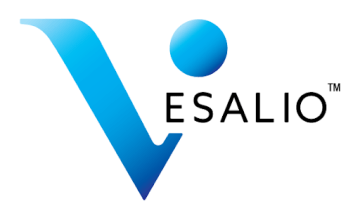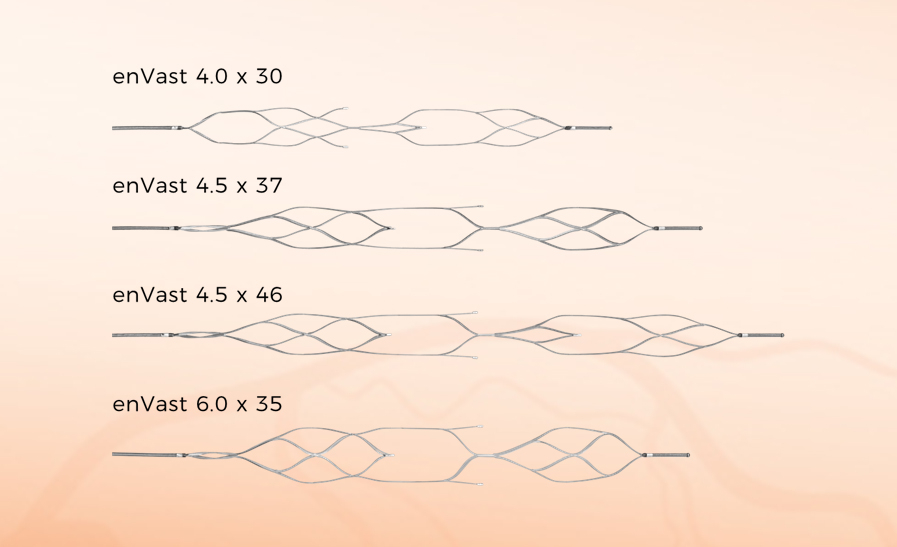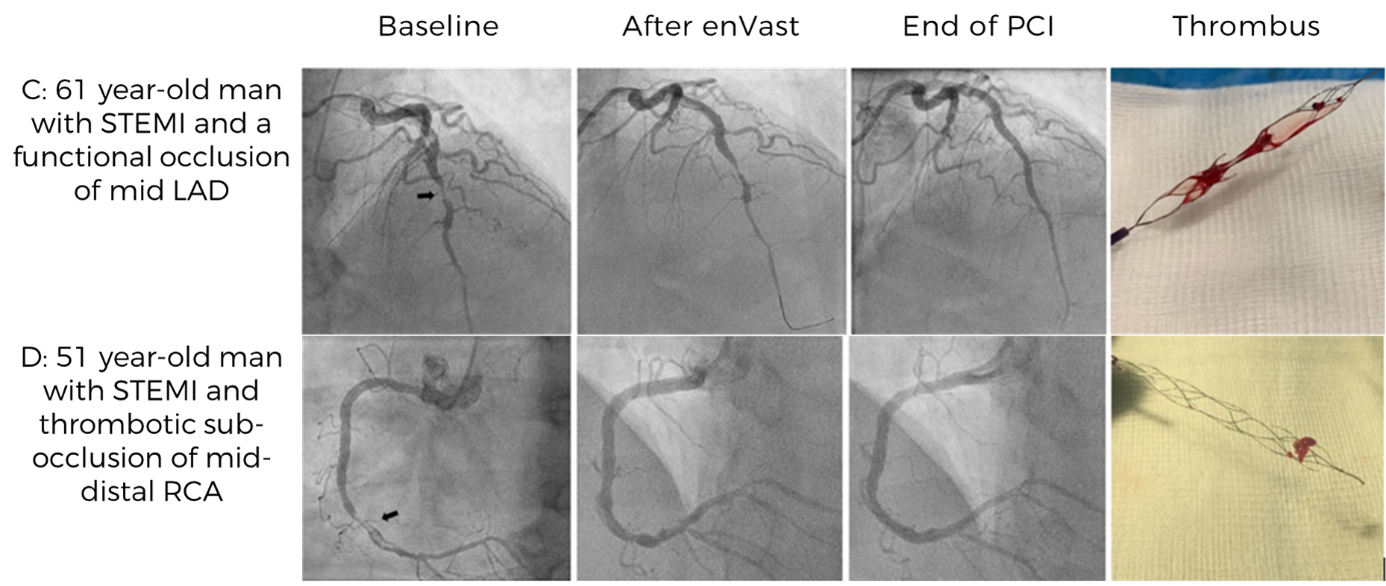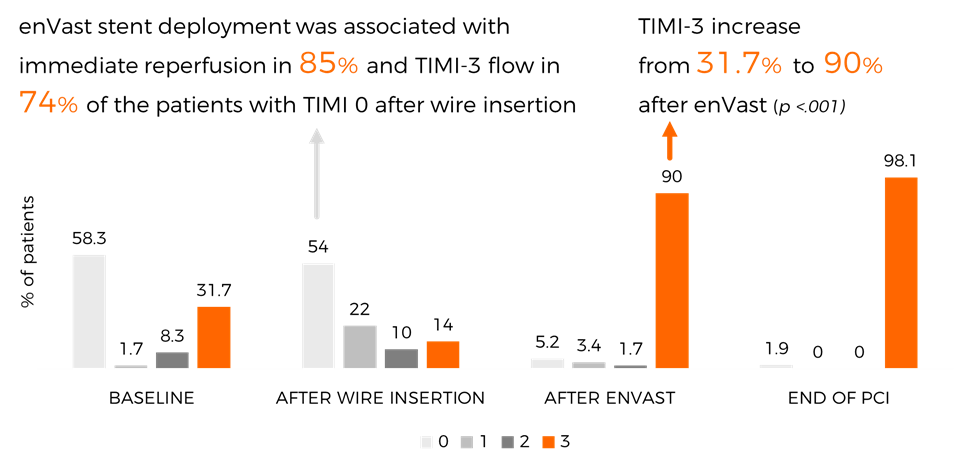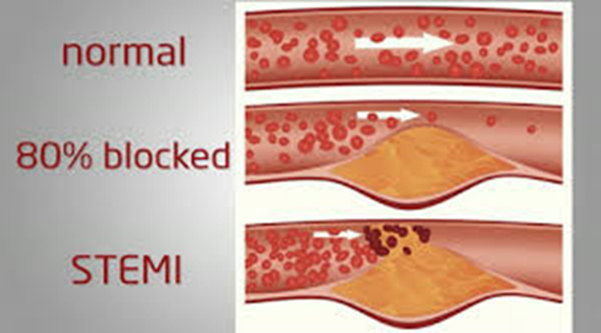enVast
For rapid reperfusion during a STEMI heart attack
The most common type of heart attack, an ST-elevation myocardial infarction (STEMI), is also the most dangerous. A STEMI is caused by a blood clot, called a large thrombus burden (LTB), that completely blocks an artery to the heart.
When an artery to the heart is blocked, oxygenation is obstructed, leading to heart muscle tissue damage.
Description
NO TIME TO WASTE
STEMI heart attack patients are two times more likely to die than other heart attack victims. Survivors have a 2 to 4 times higher risk of experiencing major, life-altering adverse events.
Reopening the artery and restoring blood flow as soon as possible is essential for preventing permanent damage or death.
Treatment Window is Short:
- Less than 3 hours from the onset, the patient has a chance of full recovery
- Greater than 3 hours from the onset, the patient will likely have some permanent damage
- Greater than 12 hours, patient outcome is poor
ENDOVASCULAR APPROACHES IN STEMI
Conventional endovascular treatment for STEMI patients involves opening the artery with balloon & stent:
- Outcomes remain poor in ~50% due to residual thrombus in the vessel
Endovascular aspiration continues to be debated. Studies show thrombus aspiration alone:
- does not improve reperfusion or outcomes, and
- bear higher potential for stroke
ENVAST, 85% IMMEDIATE REPERFUSION

